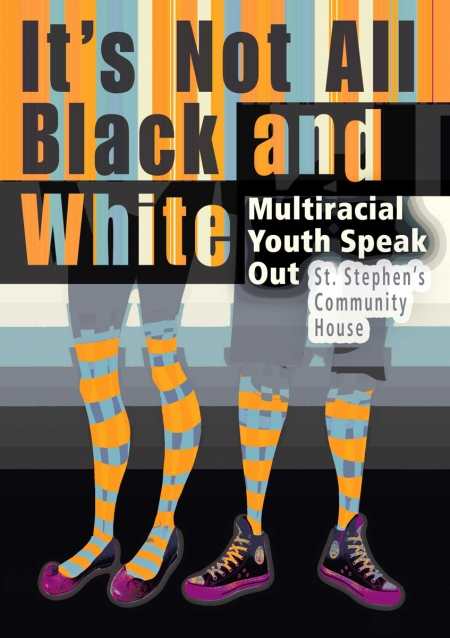
It's Not All Black and White
Multiracial Youth Speak Out
Young people from bi- or multiracial backgrounds will find their own voices echoed and amplified in this slim volume; the book may help those from a single race background begin to understand their multiracial friends or family members, and it may also serve as a tool for parents and teachers trying to understand multiracial youth.
It’s Not All Black and White is a book of essays, drawings, poems, and interviews about the struggle to find an identity while growing up mixed race. The youth who have contributed come from modern mixed-race marriages, and, as such, they are not growing up “in communities with people who look like them and have common experience[s]”; instead, they must create their own identities outside or within the cultures they straddle. The back pages contain their diverse short biographies.
The most important part of this book is the feelings the words illuminate. There is the expected anger and frustration with racism in all its many forms, but there is more here as well. The book progresses through four sections: issues of stereotyping and of owning your diverse parentage, of finding friends who honor what you are, of finding love and acceptance, and, above all, working out an identity that is true. Editor Andrea Douglas has done a fine job of giving voice to different perspectives, and the reader may begin to identify and look forward to individual voices.
There is one dialogue that represents two parts of a young man, one white, the other black. The first voice says, “Andrew likes AC/DC, Led Zepplin, Bob Dylan, Oasis … Those are fairly white bands, so let’s say that’s my domain.” The black voice replies, “No, you’re getting Andrew all wrong … I am you; you are me … We don’t activate different parts of our brain or souls when we do different things.”
Another young man speaks of his confusion when he realized he was not purely white. He writes of racism and of having to choose between sets of friends, and he interviews his father about his own racial struggles. When we hear from him near the end of the book, he says, “By being mixed, you serve as a reinforced bridge between two or more cultures.”
Questions of identity seem to be harder on females, and so it is a relief to see what they write in the last section about the positive aspects of being multiracial. One young woman writes, “if anything we’re more than, and better than, because we are of multi-race, so in a sense we have a broader sense of mind.”
The preface of the book and a short advice section at the end are written by Karen Arthurton, a multiracial mother who must be quite proud of the safe place she has created at St. Stephen’s Community House in Toronto. Although there are no revelations about this complex and often difficult issue, there are genuine voices here and, one suspects, much healing. “I love my heritages,” one young woman writes near the end, “I have accepted myself as a beautiful, young, mixed-race woman.”
Reviewed by
Jane Haugh
Disclosure: This article is not an endorsement, but a review. The publisher of this book provided free copies of the book to have their book reviewed by a professional reviewer. No fee was paid by the publisher for this review. Foreword Reviews only recommends books that we love. Foreword Magazine, Inc. is disclosing this in accordance with the Federal Trade Commission’s 16 CFR, Part 255.
